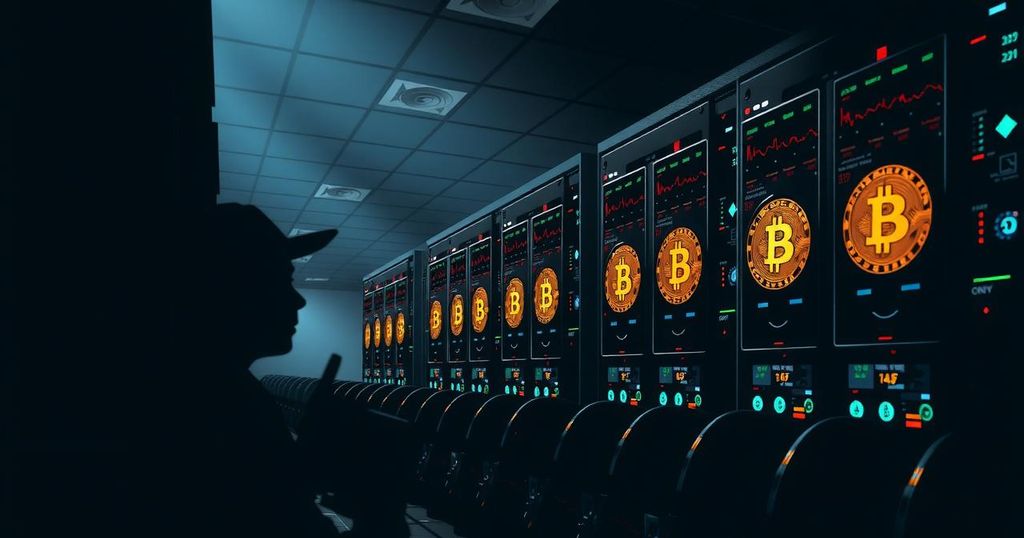Bitcoin Miners Exhibit Resilience Amidst Traders’ Cautious Approach
Summary
A recent Glassnode report indicates that Bitcoin miners are maintaining their operations robustly, with hash rates near record highs despite falling revenues since March. In contrast, traders are shifting towards a holding strategy, reflected by reduced transaction volumes and a decline in investor activity.
According to a recent report from Glassnode, Bitcoin miners are demonstrating exceptional resilience as evidenced by the network’s hash rate nearing an all-time high. The 14-day moving average hash rate has reached 666.4 exahashes per second (EH/s), just short of the all-time peak, signaling that miners are persistently investing in new hardware despite adverse market conditions. This increase in hash rate is coupled with a corresponding rise in mining difficulty, now at an average of 338,000 exahashes to mine a block, indicating one of the most challenging environments for miners in Bitcoin’s history. Amidst declining revenues since Bitcoin’s price peaked in March, primarily due to diminished fee pressure from reduced demand for monetary transfers and transaction fees from Runes and Inscription activities, miners have generated block subsidy revenues amounting to $824 million and only $20 million in transaction fees over the last 30 days. Recent analytics pointed out that transaction counts related to Runes and Inscription have been consistently underwhelming, failing to surpass 50,000 transactions on six out of eight days from late August to early September. Traditionally, miners have sold a majority of their mined BTC to manage operational costs. However, they are now transitioning towards retaining a portion of their mined supply in treasury reserves—an atypical move indicative of evolving strategies as they contend with rising production costs and potential impacts on profitability. Conversely, Bitcoin traders seem to be adopting a more conservative approach, exhibiting a preference for holding assets rather than engaging in active trading as evidenced by the drop in on-chain settlement volume, currently averaging $6.2 billion in daily transactions. Furthermore, monthly inflow volumes to centralized exchanges have significantly declined beneath yearly averages, suggesting reduced interest from investors. Glassnode analysts have observed a prevailing downward trend in spot trading volume momentum over the past three months, suggesting that Bitcoin is currently situated within a low-risk zone, susceptible to macroeconomic factors that could precipitate substantial price movements in either direction.
The recent trends in Bitcoin mining and trading activity highlight contrasting behaviors among miners and traders in the cryptocurrency market. Bitcoin mining has seen sustained vigor, with miners continuing to enhance their capabilities despite market volatility. Simultaneously, traders appear to be exhibiting a diminishing appetite for risk, leading to decreased transaction volumes and trading activity. Understanding this dichotomy provides insights into the operational dynamics of Bitcoin mining and the response of traders within current market conditions.
In summary, the Glassnode report underscores the steadfast commitment of Bitcoin miners in the face of fluctuating market conditions, characterized by heightened hash rates and evolving storage strategies. While miners adapt to rising costs by retaining mined supply, traders are increasingly opting for holding over active trading, reflecting a broader hesitation within the market. These dynamics signal a critical juncture for Bitcoin, where miner profitability may face challenges against a backdrop of declining trading volumes and investor interest.
Original Source: cryptoslate.com







Post Comment